QuestionKaren,
My tap water is very high in ammonia and therefore continued to kill every fish I had in initial startup (I took my water to the pet store several times trying to get it right) I have had tanks in the past, but never since moving to this area. This has been going on for months (yes, I tried Amno-lock). My pet stored suggested using spring water. I completely cleaned the tank, gravel, filter because so many fish continued to die. I filled the tank with purchased spring water, but now am unsure as to whether I need to add any chemicals to the water. I am trying hard to get this right because my 4 small children are highly concerned that mamma keeps killing the fish. How long should I leave the water filtering until I add fish? Please help! I have tried everything. Any fish suggestions would be appreciated too. I don't want to kill any more fish. Do you think I should continue to add spring water in the future, too or would tap water be okay?
Thanks so much,
Amy
AnswerDear Amy, I'm very sorry to hear about your troubles.. :(
The only acceptable reason for ammonia in your supply water is if your water company uses chloramines to disinfect the water. And in this case you absolutely must treat your tap water before adding it to your aquarium. If any other ammonia or nitrites or any nitrates are present in your water, you should definitely investigate for you and your family's sake! The most common explanantion for nitrites or nitrates in your source water is contamination of wells with agricultural runoff, and an unintended source of ammonia is awfully scary!
If your water supply company uses chloramines, you must use a water conditioner that neutralizes both chlorine, chloramine and ammonia that plain water conditioners leave behind.
Okay, hopefully we have cleared the ammonia in tapwater problem. Now you must cycle your aquarium.
Cycling means establishing a working beneficial bacterial colony who consume and convert ammonia the by-product of fish waste and is highly toxic, into a less dangerous compound known as nitrite. Nitrite is still toxic but not so much as ammonia, later, more bacteria convert nitrite into nitrate and the bacterias job is finished but repeated over and over to insure to keep the enviroment free of toxic chemicals. Nitrate is removed by your weekly/twice weekly water changes and is the least harmful of them all.
First allow your filter and aquarium to sit and run with all the basics, filter, heater (if neccesary), light and possibly airstone for several days before adding your cycling fish.
Cycling fish are those whom are hardy enough to withstand some poor water quality but should never be subject to it.
Black skirt tetras are by far the best fish I know of for cycling. If your aquarium is 10 gallons or under, 1 Black skirt is fine and safe for that size. Aquariums of 20 gallons and up can handle 2-3 black skirt tetras. We want to avoid putting too many fish too soon to avoid a massive pollution problem due to an un-cycled tank.
Acclimate your black skirts by floating their bag in the tankwater with the light off for 20 min. Then sit their bag in a clean pitcher, open it up, and add half a cupful of aquarium water to their bag every five minutes until the bag is nearly overflowing . This may seem like a lot of trouble but it is worth it in the long run to avoid shocking your tetras by only adjusting them to your tank temperature and not the chemistry of your water which may be different from the bag.
*Now, gently net out your tetras and carefully free them into your aquarium. Dump the bag water outside on a plant if you can.
--
Now comes the business of cycling. Remember to NOT add anymore aquatic life of any kind during cycling. Feel free to add aquatic plants as they will help remove some of the pollution levels.
Here are the important steps to remember when cycling-
*Stick to your cycling fish for now.
*Feed them very lightly--one minute flake each, once a day.
*Test your aquarium water everyday for ammonia and nitrites.
*If your ammonia or nitrites have risen above the safe bounds, immediately do a 30-50% water change to avoid these levels stressing the tetras above all. Remember to always make the replacement water equal in temperature to that of your aquarium and always dechlorinate it.
*You'll be testing and waiting for the next 4-6 weeks. Give or take. Some aquariums take longer or shorter to cycle. Every aquarium is different.
*Remember not to fall back on your testing and water changes!
* You should notice your ammonia and nitrite levels fall and rise--then nitrate may begin to appear. Once your ammonia or nitrite levels have dropped to zero and nitrate is rising, you can consider your aquarium cycled!!
~Now I would consider it safe to add a few more fish. But always remember to stock slowly and during your cycling time is a good time to research the most compatible species for your aquarium. Research is the best thing you can do before buying any aquatic life, and is the first step towards responsible fish care.
Some of the best easy fish are Platies, all danios, small barbs, Corydoras catfish, tetras like lemons, black skirts, serpae, flame ect.. Rainbowfish, gouramis and more.
Platies provide much color and activity with the added plus of monthly batches of live fry born into the aquarium makes for a very delightful fish that enjoys being in schools of 4 or more.
Well, if you have anymore questions or concerns, feel free to email me...
Only My very best wishes to you and your aquarium!!
Karen~

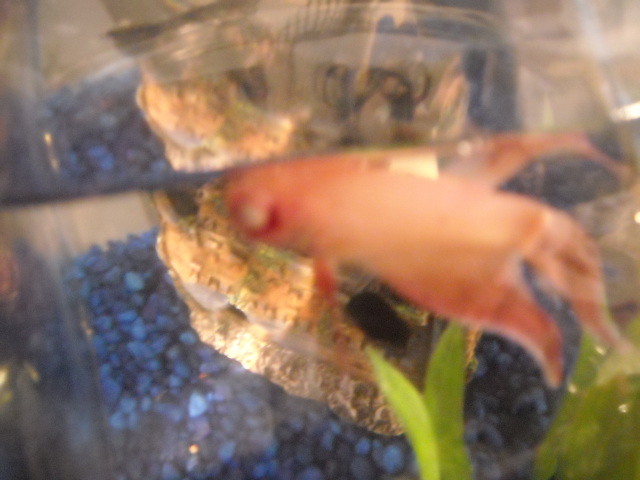 Popeye Betta
Question
popeye
My betta fish started showing si
Popeye Betta
Question
popeye
My betta fish started showing si
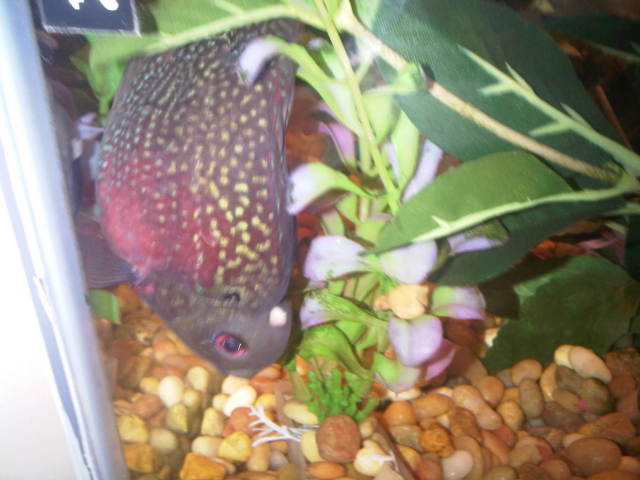 Parrot Fish - White Spot
Question
Fish Spot
Hi Ms. Fields,
I have 3 parro
Parrot Fish - White Spot
Question
Fish Spot
Hi Ms. Fields,
I have 3 parro
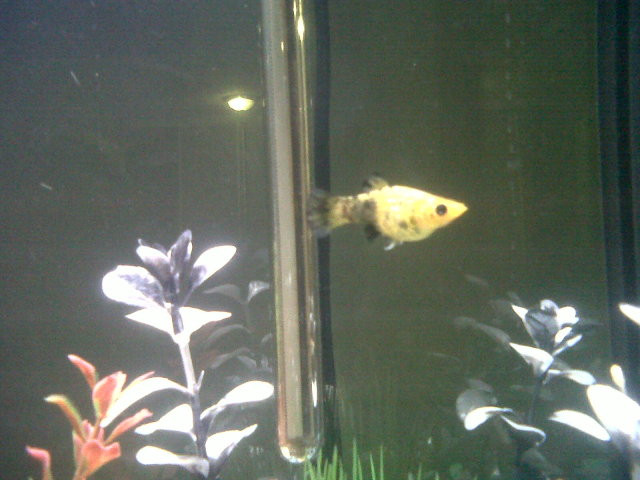 Birth of Molly Fish Babies????
Question
Pregnant Molly
Hi!! This is my fi
Birth of Molly Fish Babies????
Question
Pregnant Molly
Hi!! This is my fi
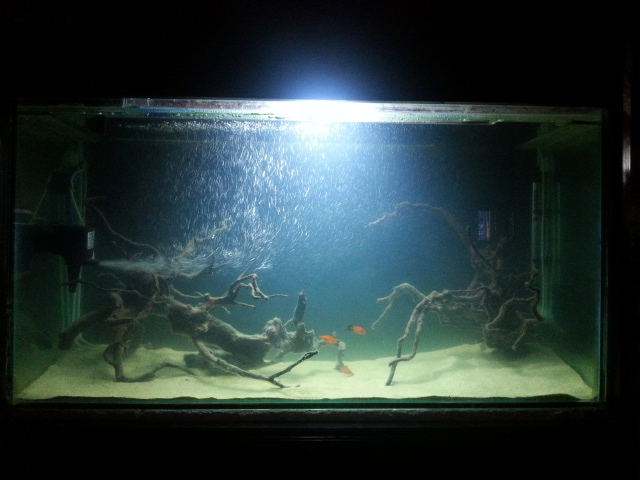 help with DISCUS
Question
My aquarium in process
Hello Sir
I am f
help with DISCUS
Question
My aquarium in process
Hello Sir
I am f
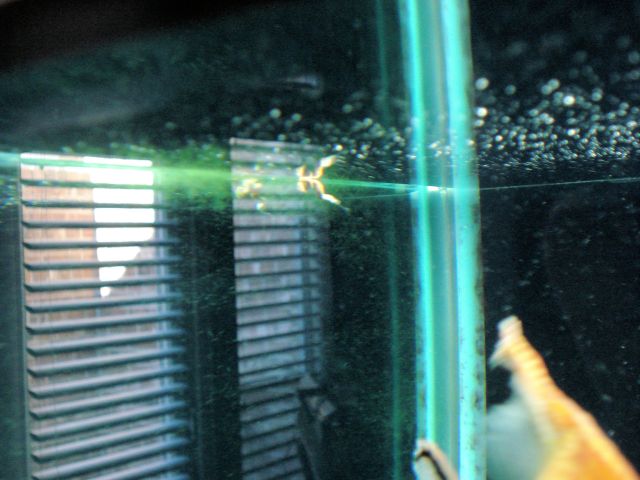 egg tube?
Question
Egg sack?
Occasionally, we have noticed
egg tube?
Question
Egg sack?
Occasionally, we have noticed